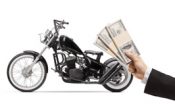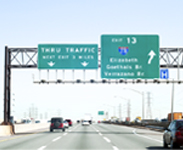Motorcycle Actual Cash Value (ACV), What’s My Bike Worth?
The age-old question that comes with buying motorcycle insurance is, “What is my bike really worth?”. Generally, the value is usually based on the motorcycle actual cash value (ACV). As with most things, there are exceptions. For instance, there are replacement cost and stated value policies. But let’s save those topics for another time.
As defined by the International Risk Management Institute, actual cash value (ACV) for a motorcycle is replacement cost (RC) minus depreciation. When buying a new vehicle, the value of that bike depreciates as soon as it leaves the dealership. Classic and rare vehicles are the exception, since they typically gain value over time.
Actual cash value can be also based on fair market value. Fair market value is what the current market is willing to pay if a motorcycle was bought in used and in good condition. These conditions are rated on how well the bike looks visually and how well it works mechanically.
When evaluating a claim, it can be tricky to determine the value. A motorcycle that is stolen or totaled may have accessories or extras and not all accessories are covered. It is important for you to ask your motorcycle insurance provider questions and read your motorcycle insurance policy to make sure you understand how bike accessories will be treated in case of a loss. All insurance companies handle accessories differently and there is typically a sub-limit.

If your accessories are covered by your motorcycle insurance policy and you do suffer a total loss or theft, securing a fair and equitable actual cash value (ACV) is vital for both you and your insurance carrier. Overall, the process is made easier in any situation if you have receipts, photos and other documentation, but a theft loss in particular can get complicated if your documentation is inadequate or non-existent. Without proper documentation, proving that the items were actually purchased and were on the bike when it was stolen can be difficult, if not impossible. As a result, there’s a chance that the accessory value will not get factored into the ACV, or the impact will be minimal. Take photos of your bike. Keep receipts. Hopefully, you’ll never need to use any of it.
It is also important to remember that when calculating actual cash value (ACV) for a motorcycle total loss or theft, the Original Equipment Manufacturer (OEM) parts on the bike had a certain value. Replacing an OEM part with an aftermarket part could either enhance or, although not typical, decrease the overall value of the motorcycle. In a replacement situation (you swap the OEM seat with an aftermarket seat) the aftermarket part can actually be less valuable than the OEM part or accessory.
The enhancement value of the aftermarket item can be determined by the cost of the aftermarket item minus the cost of the OEM item. If your aftermarket seat is more expensive, you have likely increased the value of your motorcycle, but if your aftermarket seat is worth substantially less, you may have decreased the value. All accessories and add-ons, like the original motorcycle itself, are subject to depreciation, which also needs to be factored in. Depreciation is not set in stone, but a rough estimate would be market value of the item at the time of loss.
Keep in mind that not all insurance carriers use the same method in evaluating actual cash value (ACV) and accessory coverage. Be sure to educate yourself and keep good records and photos of any modifications and accessories to your motorcycle.
For more information on Rider Insurance coverages and packages in your state, click here.





